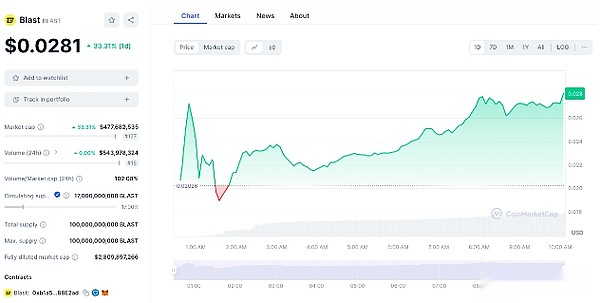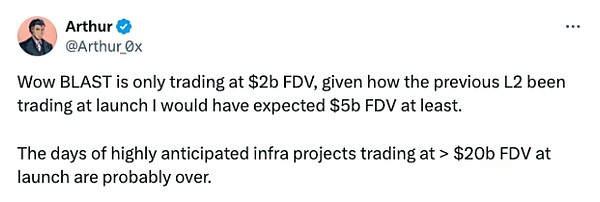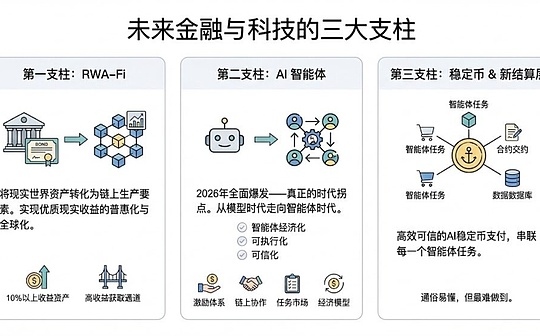
Author: Tom Mitchelhill, CoinTelegraph; Compiled by: Deng Tong, Bitchain Vision
The long-awaited Ethereum Layer 2 network native token, Blast (BLAST), soared 40% after its launch, outperforming other high-profile airdrops that have been listed in recent weeks.
According to the aggregate data from Ambient Finance and perps trading platform Aevo,BLAST issuance price of USD 0.02 per token and the full dilution value (FDV) at issue is USD 2 billion.
According to CoinMarketCap, BLAST’s price has risen a little over 40% to $0.0281 as of this article’s release.

Since its launch, blast tokens have risen by 40%.Source: CoinMarketCap
It is in stark contrast to the recently released tokens, including the Ethereum Layer 2 network zkSync (ZK) and cross-chain interoperability LayerZero (ZRO).The two tokens have fallen by 46% and 43% respectively since their launch.
The airdrop released 17% of the total BLAST supply, with 7% of which were distributed to users who started bridgeing Ethereum or USD to the network on Blast (USDB) late last year.
Another 7% are allocated to users who “contribute successfully” to decentralized applications (DApps) on the network, while 3% are allocated to the Blur Foundation for future airdrops to their communities.
This airdrop caused some criticism from cryptocurrency market commentators on X, among whichMost people think the airdrop is valued below their expectations.
Arthur Cheong, co-founder of cryptocurrency investment firm DeFiance Capital, saidBLAST’s $2 billion FDV is surprising as he expects the value to be close to the $5 billion mark.

Source: Arthur
The Blast Network was co-founded by Blur founder Tieshun Roquerre (more commonly his pseudonym PacMan), and was criticized by its seed investors in November for lacking enough functionality to justify the one-way bridging mechanism that makesUsers lock their ETH for months.
Blast Airdrop attracts scams
Like several other high-profile airdrop events this year, including the cross-chain bridge protocol Wormhole’s airdrop event, Blast’s airdrops have attracted a large number of scammers from all over X.
Scammers often choose large-scale airdrop activities to impersonate legitimate imitators, as airdrops often require cryptocurrency users to connect their wallets and sign transactions to claim their allocated tokens.
Encrypted security service Scam Sniffer found a user who became a victim of Blast airdrop scam who lost more than $217,000 after signing multiple phishing signatures.

Source: Scam Sniffer








